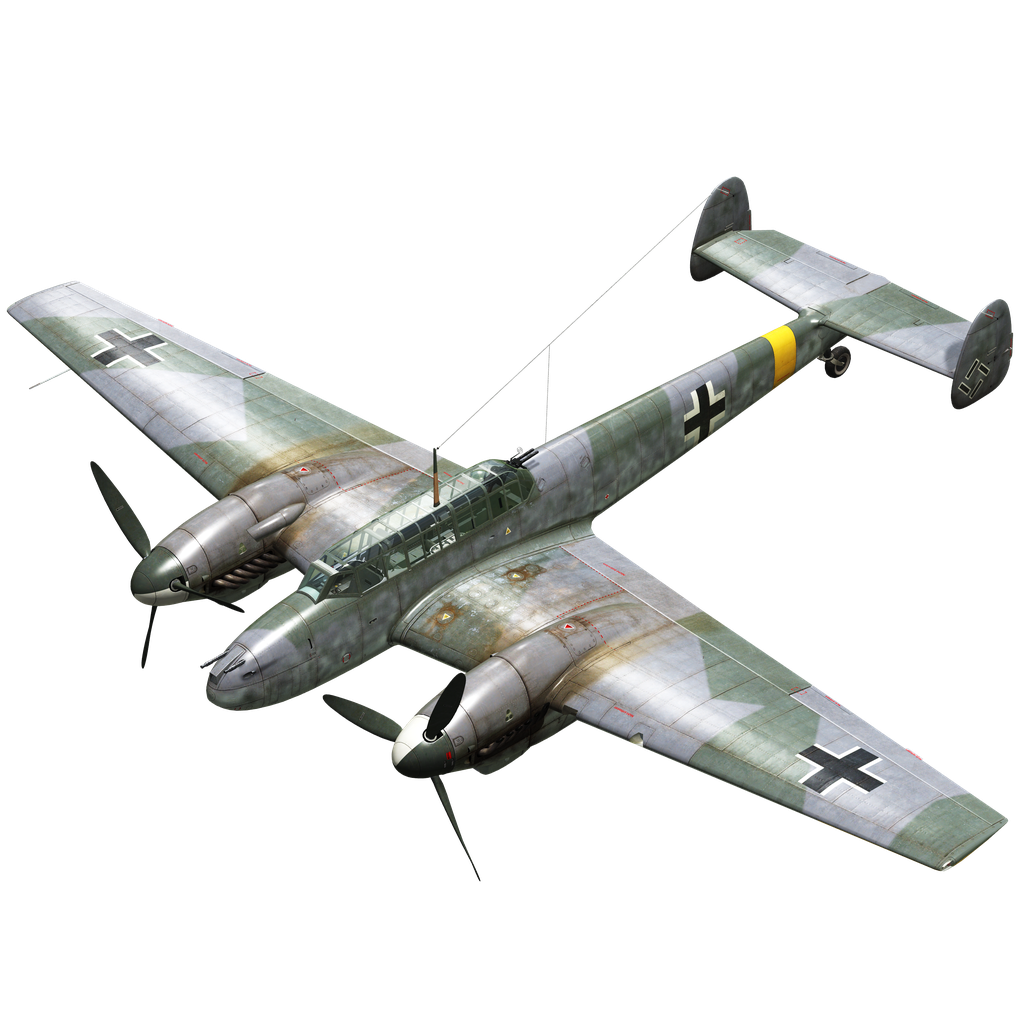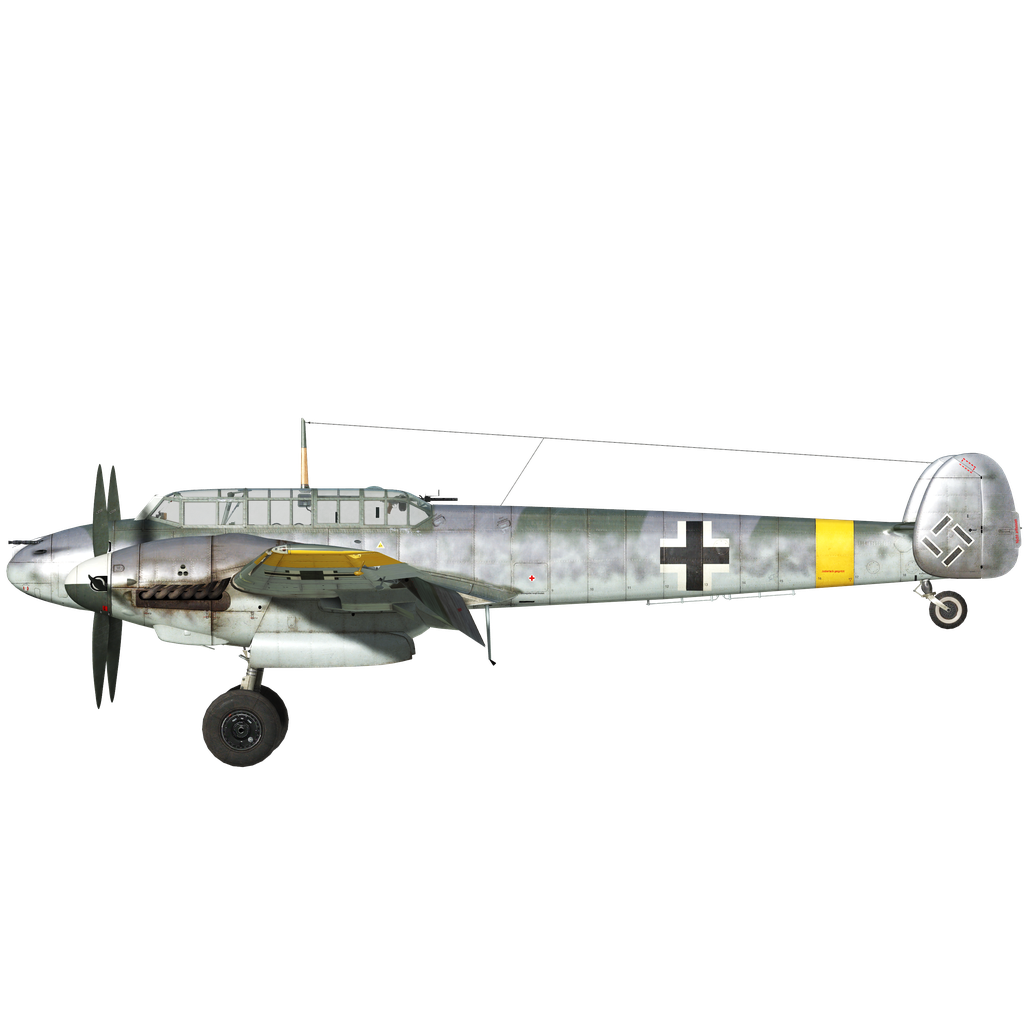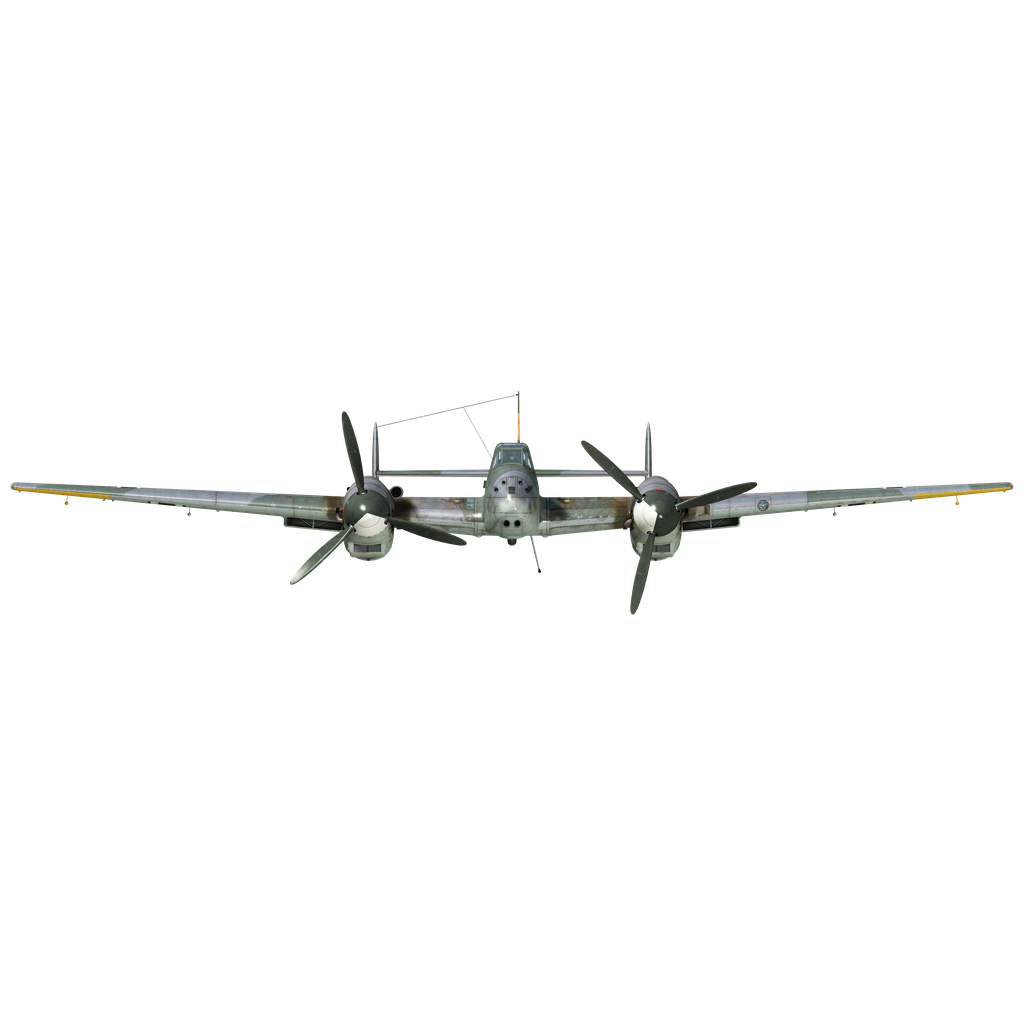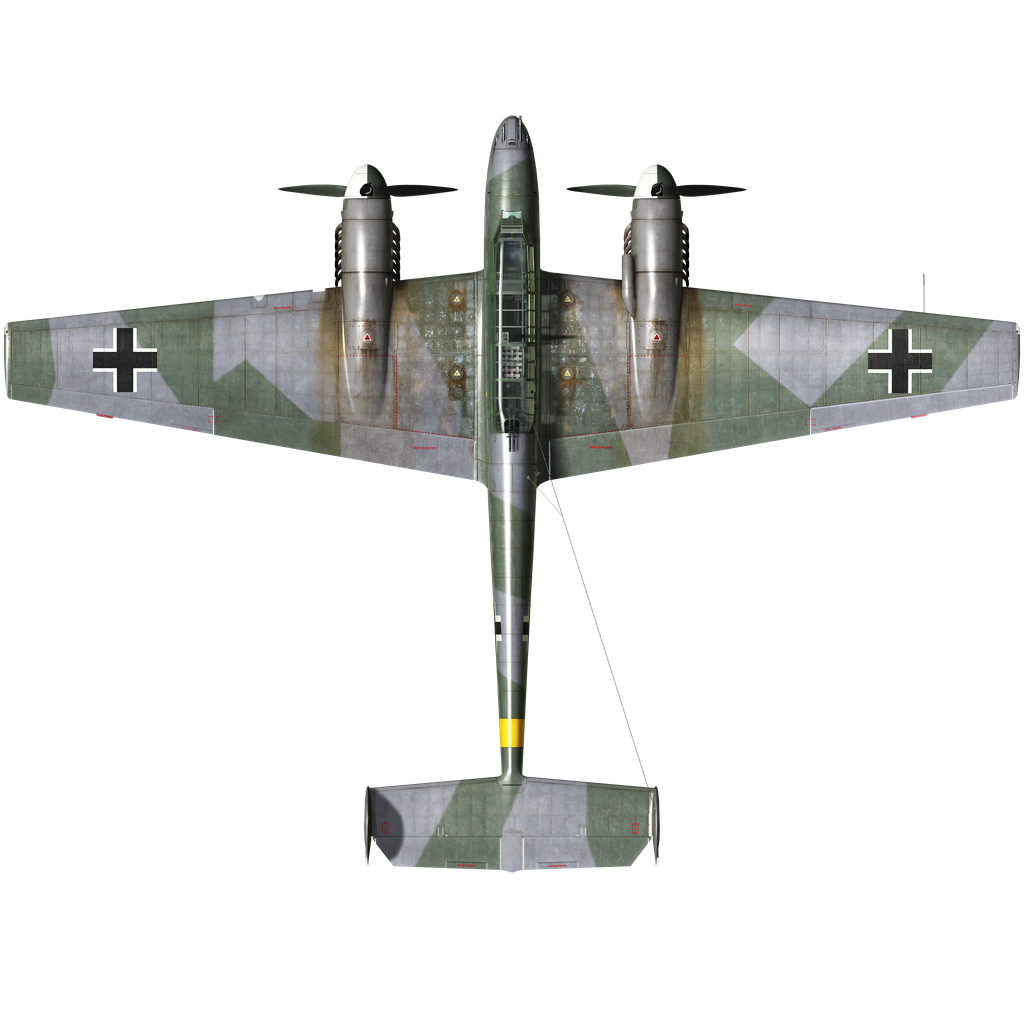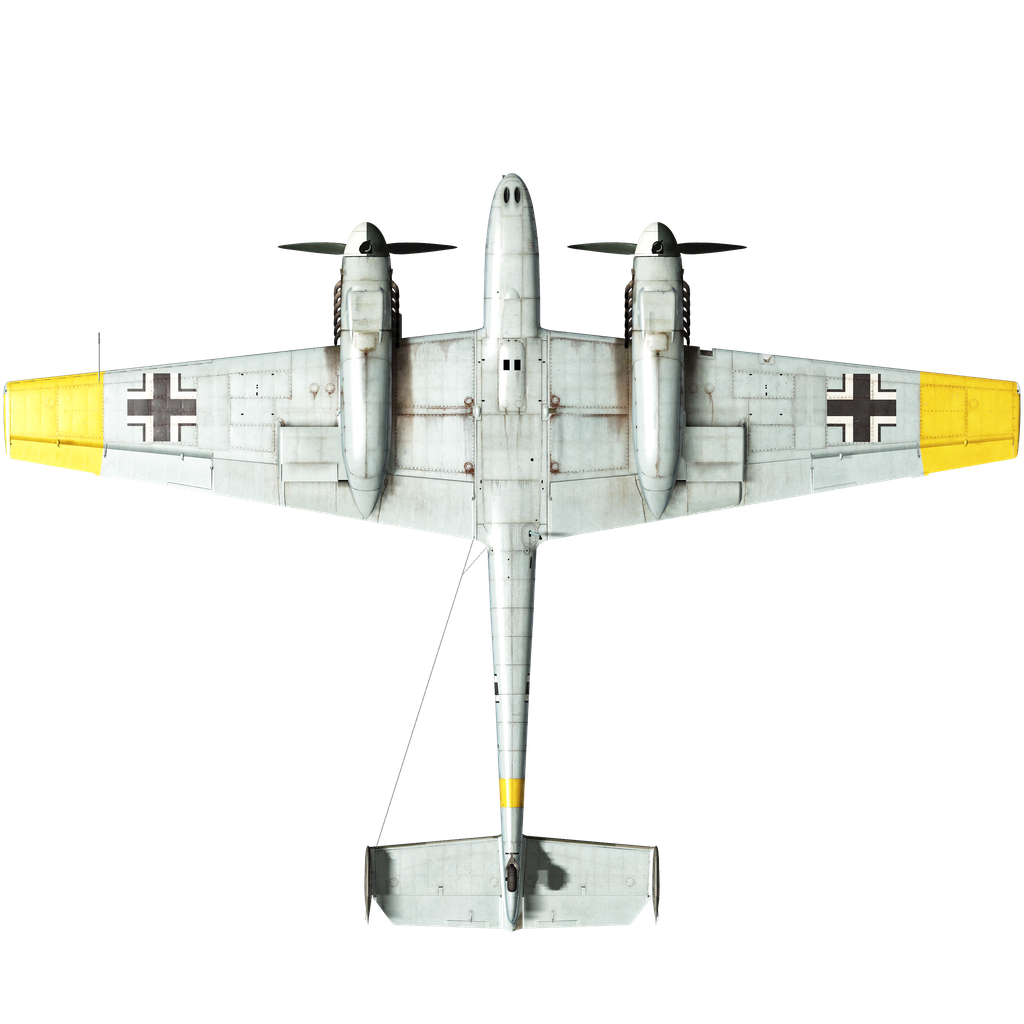The Bf 110 was designed in 1934 as a long-range multi-role fighter and bomber escort. At the time, this idea was being embraced by almost every country in the world, and creating the latest aircraft seemed like a logical step to take. The prototype first flew on May 12, 1936, and production of the aircraft began in August 1937, but the first production version with Daimler-Benz engines did not begin to be built until 1939 due to a delay in the production of the DB601 engines.
However, despite its good speed characteristics and powerful armament, this aircraft proved to be unsuitable for fighter missions under combat conditions. The Battle of Britain demonstrated the failure of the "heavy fighter" concept. Because of its heavy weight, the Bf 110 was inferior in climb and maneuverability to all the enemy's main single-engine fighters, so it was regarded primarily as a fighter-bomber and its production was curtailed. It was planned to start production of a new model — the Me 210. However, difficulties with its development forced the resumption of serial production of the Bf 110 in 1942. This naturally led to the decision to create an improved modification of this aircraft — thus the Bf 110 G was born.
The first modification of the Bf 110 G-2 fighter-bomber, which could be used as a "heavy fighter," went into production in May 1942.
The Bf 110 G-2 was a two-seat, twin-engined, all-metal low-wing aircraft powered by the DB 605B-1. It had retractable landing gear and no external struts. The DB 605B-1 developed 1,475 hp at takeoff and 1,355 hp at an altitude of 5,700 meters in emergency mode. In addition, due to the increased weight of the aircraft and armament, reinforced landing gear struts were installed and some minor improvements in design and equipment were introduced.
The offensive armament consisted of two 7.92 mm MG 17 machine guns and two 20 mm MG 151/20 cannons. The defensive armament was also strengthened by replacing the 7.92 mm MG 15 turret machine gun with a twin MG 81Z of the same caliber. Under the fuselage were two ETC 500 racks, which could be replaced by two 20 mm MG 151/20 cannons (200 rounds each, such a modification was called Rüstsatz/R M1).
The mounts for the two 300-liter drop tanks under the wings could be replaced by four ETC 50/VIII racks to increase the bomb load from 1,000 to 1,200 kg.
-
G-2/R1: with 37 mm BK 3.7 (Flak 18) cannon under the fuselage instead of the MG 151/20 cannons. Ammunition was 72 rounds in 6-round magazines located in the fuselage near the gunner's position, who loaded the gun manually;
-
G-2/R2: with GM1 boost system. A 440 kg nitrous oxide tank was installed in place of the gunner, and the rear cockpit armor and MG 81Z machine guns were removed;
-
G-2/R3: instead of four MG 17 nose machine guns, two 30 mm MK 108 cannons (135 rounds each) were installed.
-
G-2/R4: simultaneously modified R1 and R3;
-
G-2/R5: retrofitted with R1, R2, and R3 types at the same time.
A total of 797 aircraft of this modification were built. On the Eastern Front, the Bf 110 was mainly used for attacks on ground targets and as a reconnaissance aircraft, but for some time it was also used as a night fighter, e.g. in 10.(Nachtjagd)/ZG 1 (Taman, Bagerovo airfield).
An attempt was made to use the Bf 110 G-2/R1 as an anti-tank aircraft, but this idea was quickly abandoned due to its high vulnerability and the difficulty of operating from primitive airfields, and it was transferred to the Reich Air Defense. The 37 mm cannon proved effective against bombers: a single hit usually destroyed a B-17 heavy bomber. On the other hand, the weight of the cannon and the additional drag of the fairing made the Bf 110 extremely vulnerable to fighter escorts. In the summer of 1943, almost all surviving Bf 110s were recalled from the Eastern Front to German air defense units.
1. W. Creen "The Warplanes of the Third Reich", Galahad Books, 1986
2. "Wings of the Luftwaffe" Translation of W. Green's book "Warplanes of the Third Reich" by A. Firsov, 1993.
3. A. Larionov, R. Maraev "Goering's destroyer" Journal "Aviation and Time", № 5, 2010
4. Materials from the site airwar.ru
